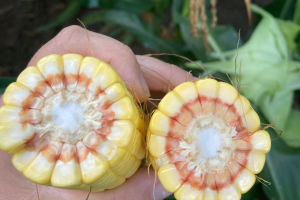Southwest Michigan field crops update – September 18, 2025
This is the final southwest Michigan field crops update of the season as corn and soybeans are entering physiological maturity and drying down for harvest.
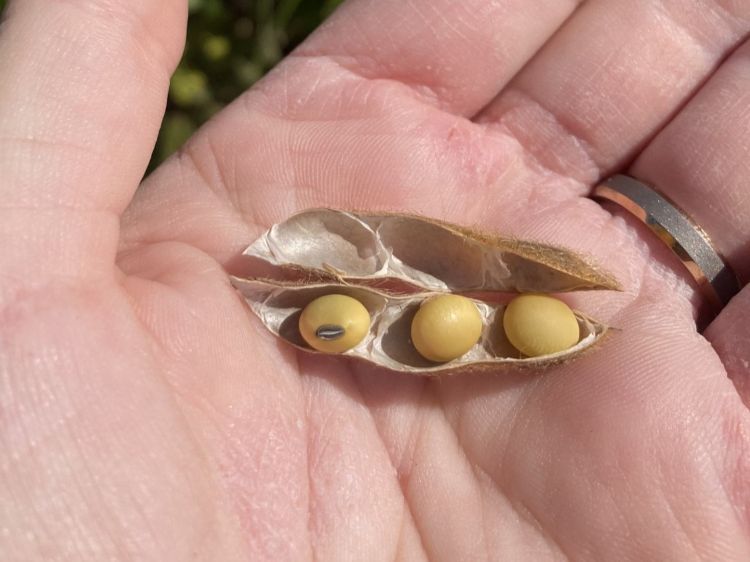
Weather
The past week was hot and mostly dry, with small pop-up showers over parts of southwest Michigan over the weekend. They provided mostly negligible moisture. High temperatures are expected to continue over the next few days, with the potential for about 0.25 inches of rain over the weekend and into early next week. The rain will bring slightly cooler temperatures.
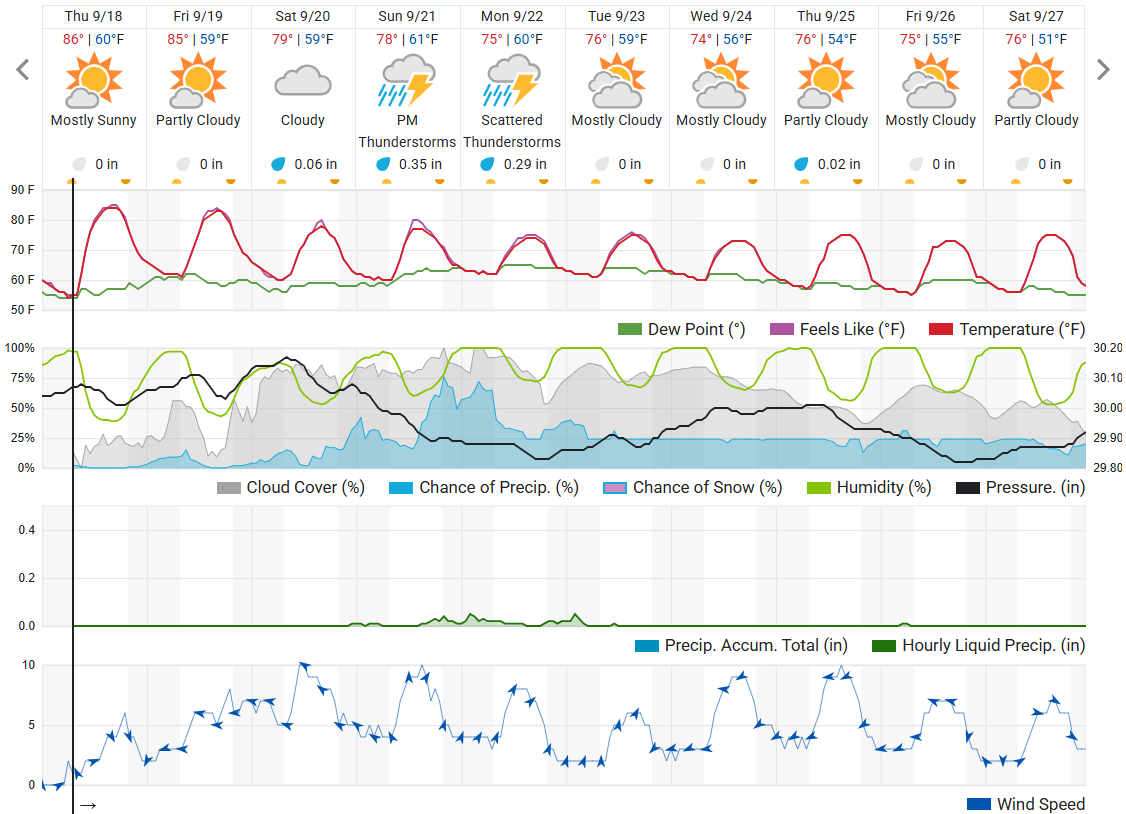
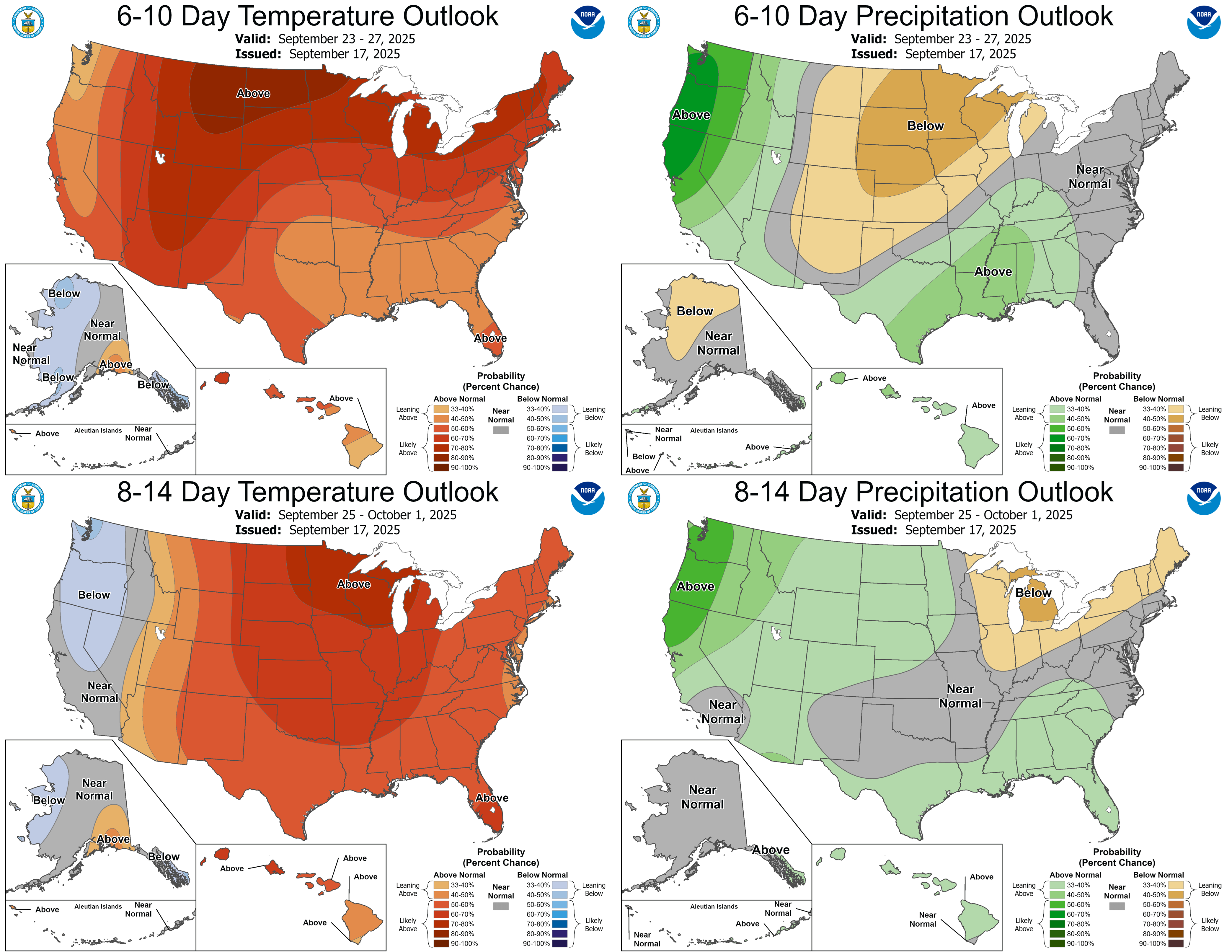
Crops and pests
Soybeans are mostly at R7, which is where one pod anywhere on the plant has reached mature pod color, or R8 (full maturity). At R8, harvest will begin once the soybeans have dried down sufficiently.
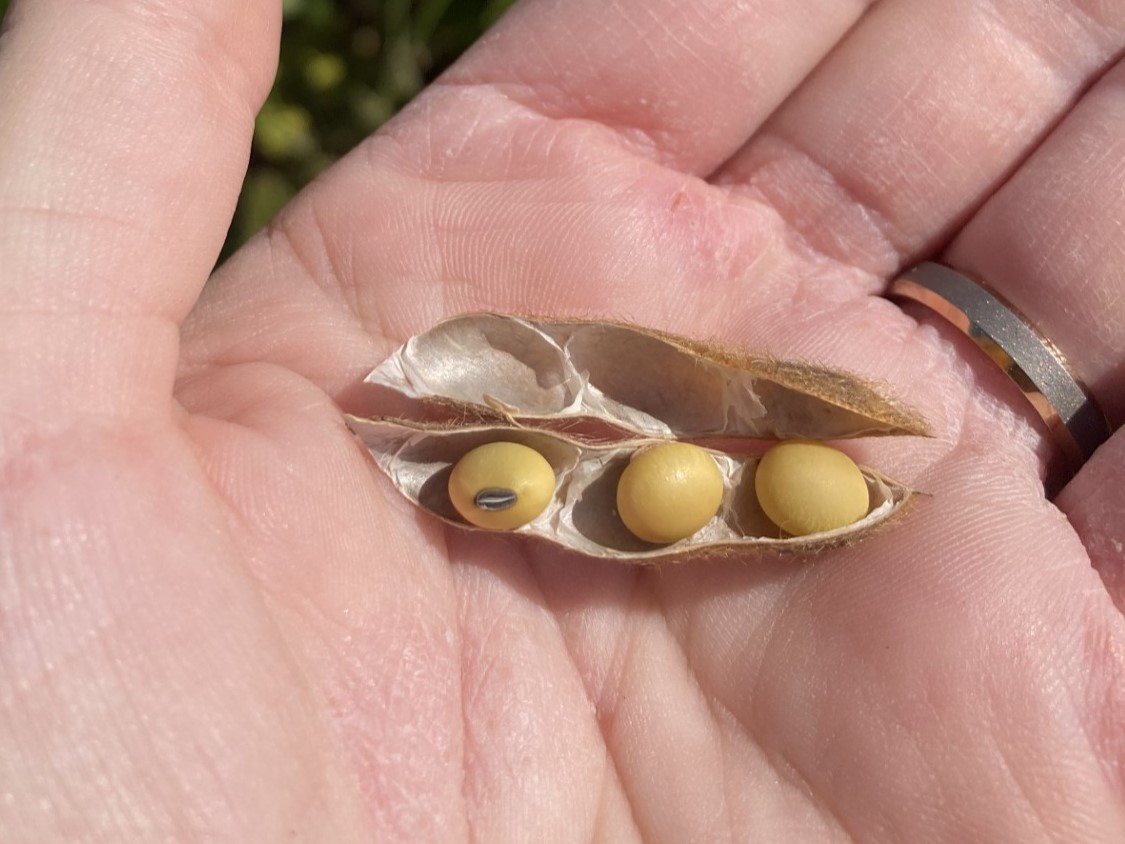
Seed corn harvest appears to have made great progress over the past week. Commercial corn is finishing up R5 (dent) and is at or approaching R6 (black layer). At R6, a black layer forms on the tip of the kernel where it attaches to the cob. Scrape the tip, and if a hard, black layer is visible, corn has reached physiological maturity. Once it has dried down enough, harvest will begin.
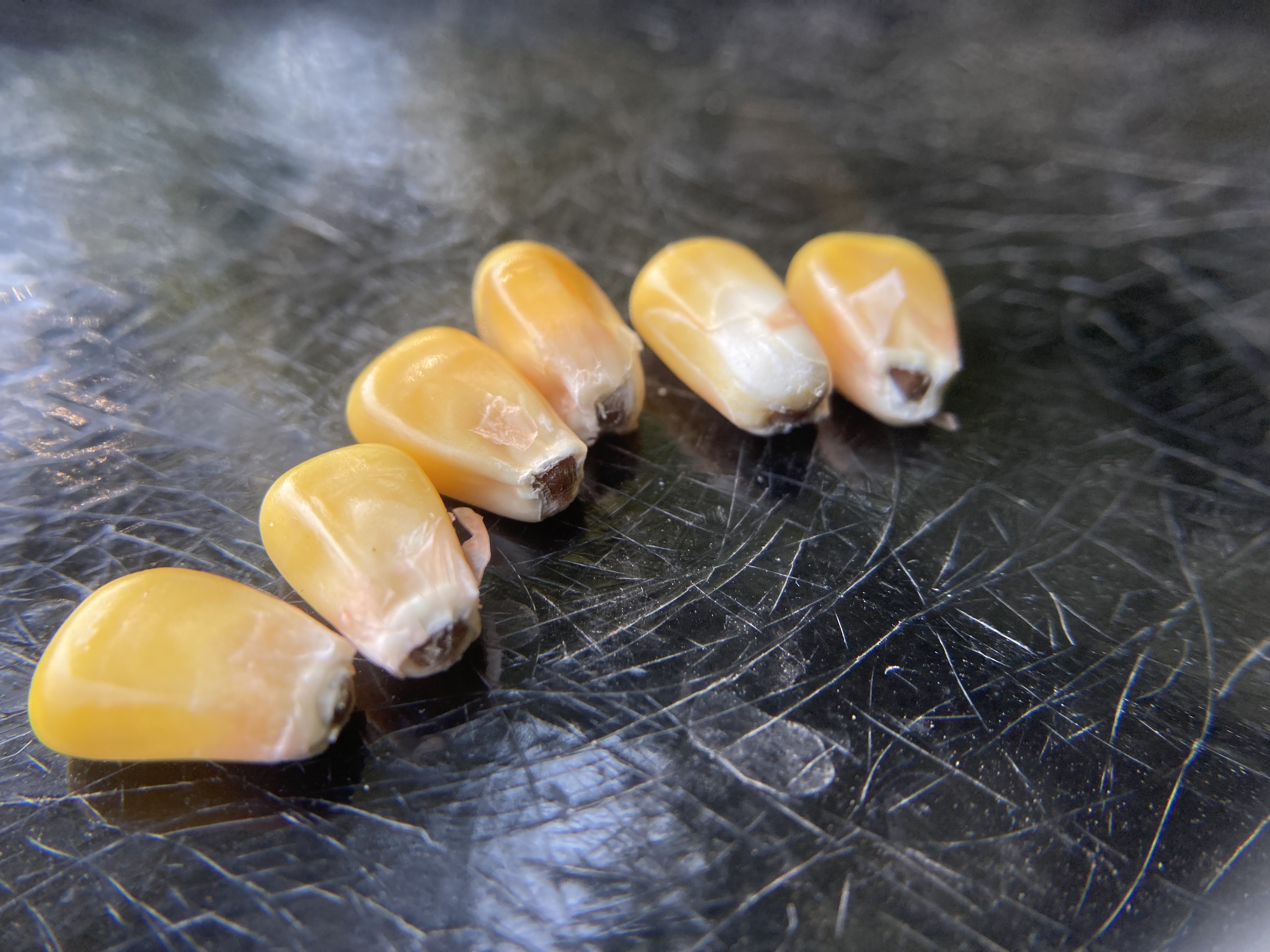
Planting preparations for winter wheat are underway. The Hessian fly-free date for southwest Michigan is Sept. 20. With the recent dry weather and little projected rainfall, germination and emergence are likely to be delayed on early plantings.
Warm temperatures over the past week slowed down storage potato harvest. Harvesting when air and pulp temperatures are too high increases the risk of potatoes rotting in storage.
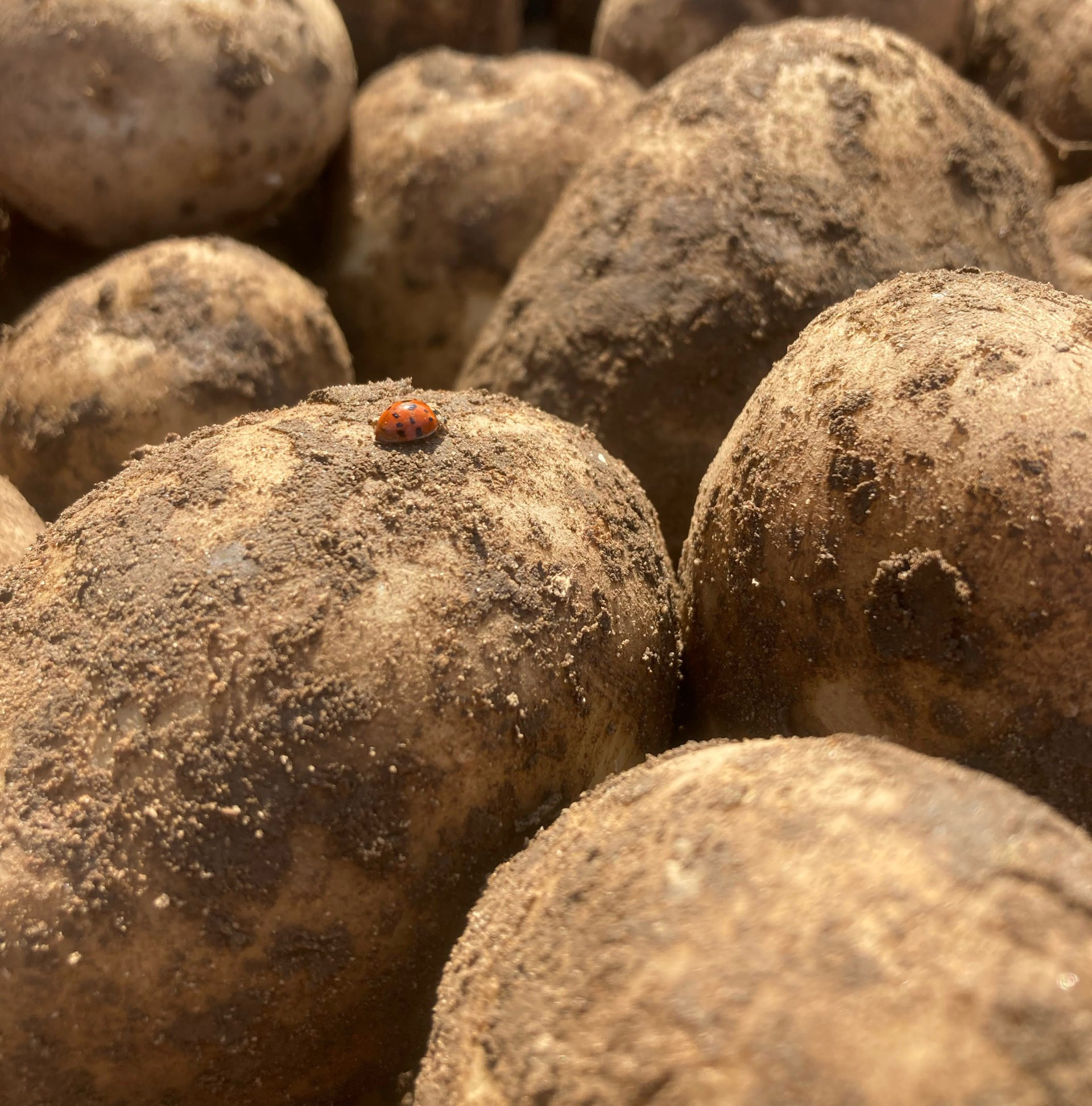
Many alfalfa and forages were baled this past week. At this point in the season and through dormancy, regrowth above and belowground is the priority. This growth can be fueled by timely phosphorous and especially potassium fertilizer application(s).
Weekly water use
Dry and warm temperatures this week increased crop water use. With little rain in the forecast, many of you may be wondering if fields still need a shot of water and whether it’s time for the last irrigation of the season. For more information, check out “Is it time for the last irrigation?” from Michigan State University Extension.
If you’ve inter-seeded cover crops into corn or soybeans, a dry spell may hold back germination until we get rain. That delay can limit fall growth and reduce some of the cover crop benefits. If it’s dry enough to stall cover crops, chances are your corn and soybeans could still benefit from another irrigation It could help beans fill out or add test weight to corn. See “Irrigate cover crops for better establishment” from Michigan State University Extension for details.
Currently, corn at the dent stage is using about 0.14 inches of water per day. By black layer, that drops to about 0.09 inches. After black layer, extra irrigation won’t add yield. At R7 (beginning maturity), soybeans are using about 0.14 inches per day (just under 1 inch per week). Water use falls off quickly after this stage, dropping to around 0.20 inches per week at full maturity. A newly published Michigan State University Extension bulletin provides guidance on soybean irrigation management.
Irrigation Scheduling Tools can help estimate crop water needs and decide timing and application.
Estimated weekly crop water use for field crops in Michigan (inches/week) for the week of Sept. 15-21:
|
Crop |
Growth stage |
Constantine |
Entrican |
Hart |
|
Corn |
Reference ET |
1.05 |
0.99 |
0.94 |
|
Corn |
VT, Silk, Blister, Dough, Begin Dent |
1.16 |
1.09 |
1.03 |
|
Corn |
Full Dent |
1.05 |
0.99 |
0.94 |
|
Corn |
Black Layer |
0.69 |
0.65 |
0.62 |
|
Soybeans |
R5 Begin seed / R6 Full seed |
1.16 |
1.09 |
1.03 |
|
Soybeans |
R7 Begin Mature |
1.05 |
0.99 |
0.94 |
|
Soybeans |
R8 95% Pods Mature |
0.21 |
0.2 |
0.19 |
|
Soybeans |
Mature |
0.11 |
0.1 |
0.09 |
The table above presents estimated crop water use for various field crops across three locations in Michigan. This data helps irrigation management decisions by showcasing potential crop evapotranspiration, calculated based on reference evapotranspiration and crop coefficients for each crop growth stage. It is crucial to note that crop water use values vary across regions due to differences in weather conditions, growth stages, agronomic practices and soil properties.
When using these values for irrigation scheduling, be mindful that they assume all applied irrigation water will be utilized by the plants without any loss. Additionally, these values do not account for any precipitation that may occur during the week of calculation.
Reference evapotranspiration data was obtained from Michigan State University Enviroweather, which also offers a model for determining potential crop evapotranspiration. To access this tool, visit Enviroweather, click on "Crops," select your crop and use the potential evapotranspiration tool by choosing your nearest weather station, the latest date of interest and other crop information.
Field Crops Virtual Breakfast Series
.jpg?language_id=1)
Late season weed control, presented by Christy Sprague, was the topic for the MSU Extension Field Crops Virtual Breakfast this week. Take time now to identify weed escapes and plan to prevent them next year.
Recordings of this and all the Virtual Breakfast meetings are closed-captioned and available at the Field Crops Virtual Breakfast webpage and the MSU Extension Field Crops Team social media platforms: Facebook, Spotify, YouTube, Apple Podcasts and Twitter/X.
This work is supported by the Crop Protection and Pest Management Program [grant no 2024-70006-43569] from the USDA National Institute of Food and Agriculture. Any opinions, findings, conclusions, or recommendations expressed in this publication are those of the author(s) and do not necessarily reflect the view of the U.S. Department of Agriculture.



 Print
Print Email
Email

